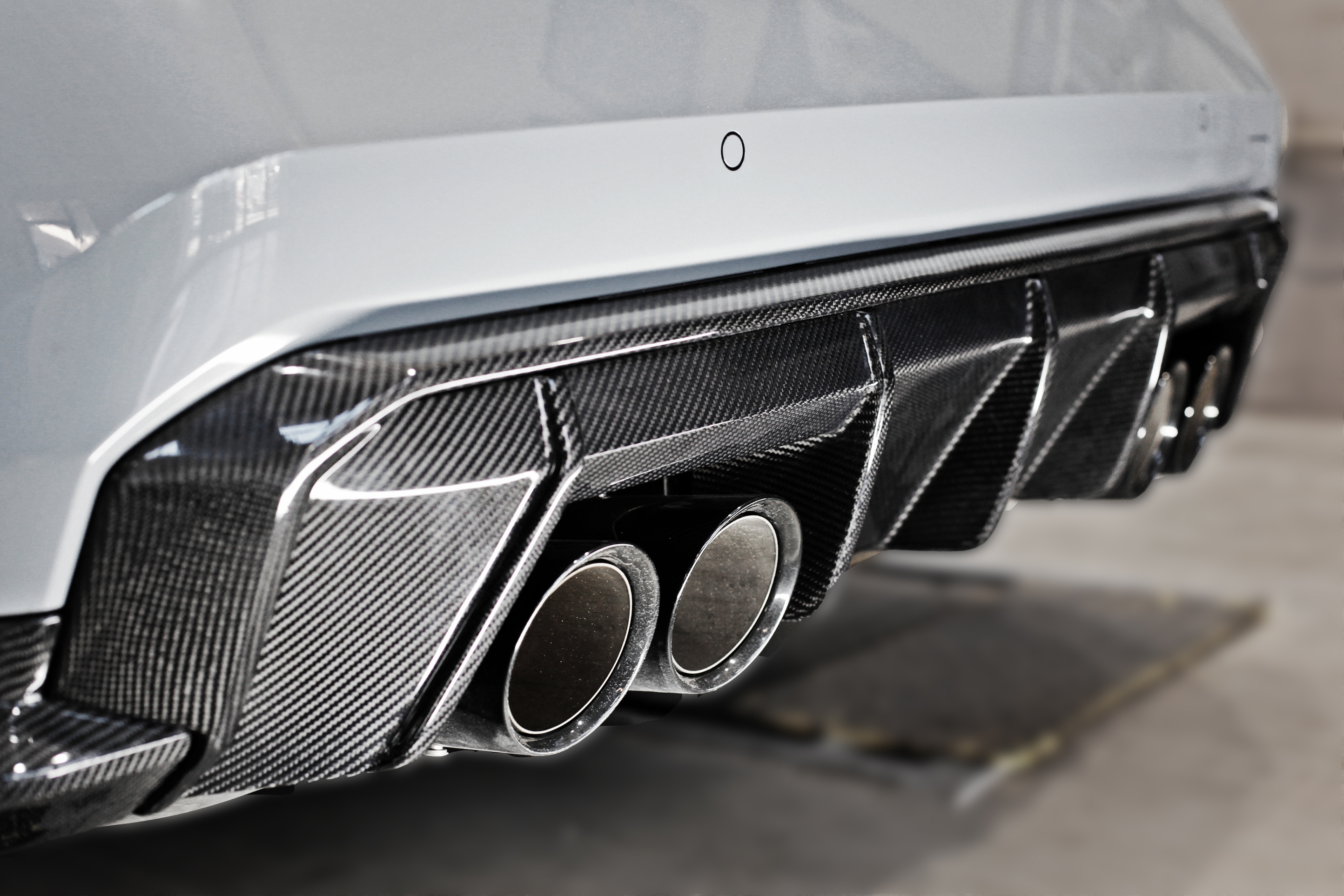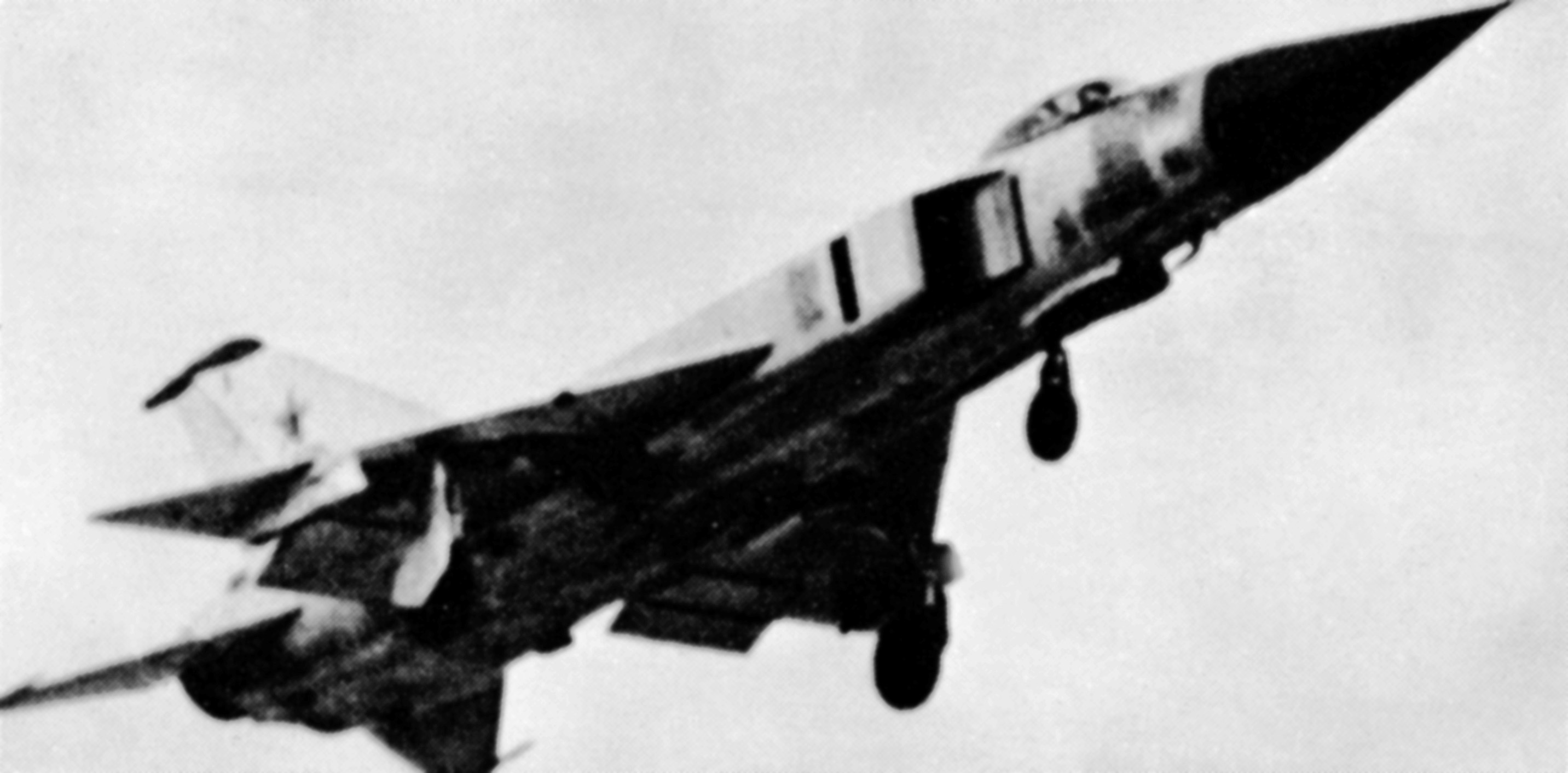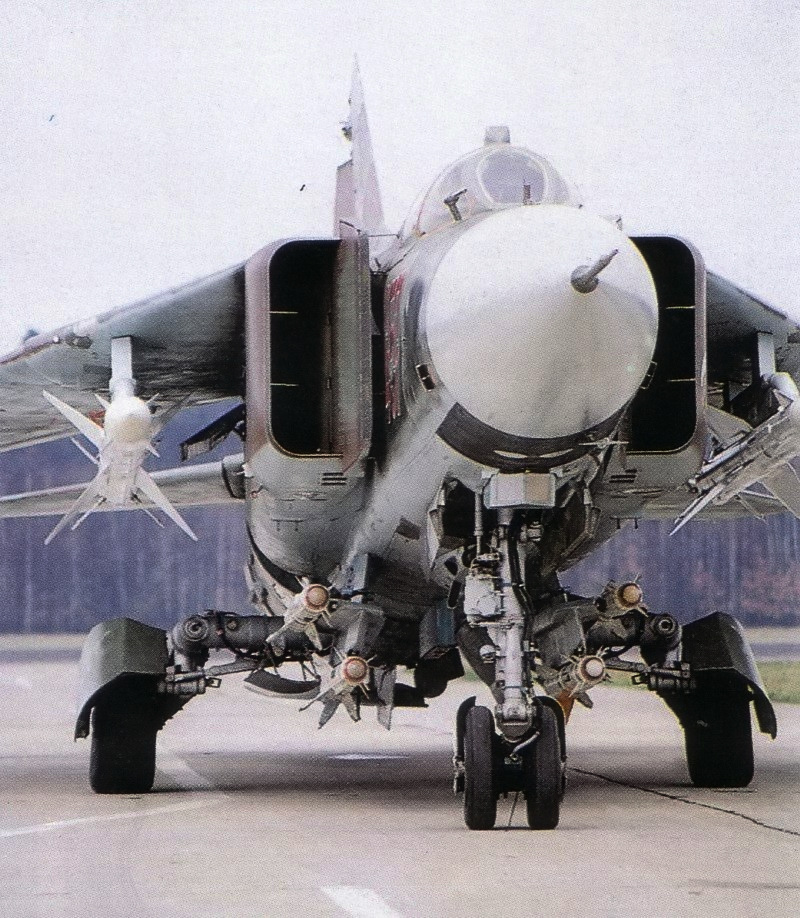|
Splitter Plate (aeronautics)
A splitter plate is a component in some jet aircraft, used to control the airflow into the engine. Where the engine air intake is mounted partway back along the fuselage or under the wing, the splitter plate diverts the boundary layer away from the engine intake. It is a form of boundary layer control. Diverting the boundary layer When a body, such as a wing or a fuselage, passes through a fluid such as the air, a boundary layer of fluid attaches to the body and moves along with it. If this layer enters the air intake of a jet engine, it can affect performance. In order to stop this boundary layer problem from happening, a splitter plate may be used to separate the boundary layer from the fast-moving free airflow and divert it away from the engine intake. Many splitter plates have a series of holes drilled into the surface closer to the engine side of the intake. Suction is applied to these holes, further reducing the boundary layer. Airplanes * General Dynamics F-16 Fighti ... [...More Info...] [...Related Items...] OR: [Wikipedia] [Google] [Baidu] |
Royal Military Museum Brussels 2007 230
Royal may refer to: People * Royal (name), a list of people with either the surname or given name * A member of a royal family or Royalty (other), royalty Places United States * Royal, Arkansas, an unincorporated community * Royal, Illinois, a village * Royal, Iowa, a city * Royal, Missouri, an unincorporated community * Royal, Nebraska, a village * Royal, Franklin County, North Carolina, an unincorporated area * Royal, Utah, a ghost town * Royal, West Virginia, an unincorporated community * Royal Gorge, on the Arkansas River in Colorado * Royal Township (other) Elsewhere * Mount Royal, a hill in Montreal, Canada * Royal Canal, Dublin, Ireland * Royal National Park, New South Wales, Australia Arts, entertainment, and media * Royal (Jesse Royal album), ''Royal'' (Jesse Royal album), 2021 * Royal (Ayo album), 2020 * ''The Royal'', a British medical drama television series * ''The Royal Magazine'', a monthly British literary magazine published between 1898 and 19 ... [...More Info...] [...Related Items...] OR: [Wikipedia] [Google] [Baidu] |
North American XB-70 Valkyrie
The North American Aviation XB-70 Valkyrie is a retired prototype version of the planned nuclear-armed, deep-penetration supersonic strategic bomber for the United States Air Force Strategic Air Command. Designed in the late 1950s by North American Aviation (NAA) to replace the B-52 Stratofortress and B-58 Hustler, the six-engine, delta-winged Valkyrie could cruise for thousands of miles at Mach 3+ while flying at . At these speeds, it was expected that the B-70 would be practically immune to interceptor aircraft, the only effective weapon against bomber aircraft at the time. The bomber would spend only a brief time over a particular radar station, flying out of its range before the controllers could position their fighters in a suitable location for an interception. Its high speed made the aircraft difficult to see on radar displays and its high-altitude and high-speed capabilities could not be matched by any contemporaneous Soviet interceptor or fighter aircraft. The i ... [...More Info...] [...Related Items...] OR: [Wikipedia] [Google] [Baidu] |
Diffuser (automotive)
A diffuser, in an automotive context, is a shaped section of the car rear which improves the car's aerodynamic properties by enhancing the transition between the high-velocity airflow underneath the car and the much slower freestream airflow of the ambient atmosphere. It works by providing a space for the underbody airflow to decelerate and expand (in volume, as density is assumed to be constant at the speeds that cars travel) so that it does not cause excessive flow separation and drag, by providing a degree of " wake infill" or more accurately, pressure recovery. The diffuser itself accelerates the flow in front of it, which helps generate downforce. This is achieved by creating a change in velocity of the air flowing under the diffuser by giving it a rake angle which in turn generates a change in pressure and hence increases downforce. __TOC__ Overview When a diffuser is used, the air flows into the underbody from the front of the car, accelerates and reduces pressure. T ... [...More Info...] [...Related Items...] OR: [Wikipedia] [Google] [Baidu] |
Diverterless Supersonic Inlet
A diverterless supersonic inlet (DSI) is a type of jet engine air intake used by some modern combat aircraft to control air flow into their engines. It consists of a "bump" and a forward-swept inlet cowl, which work together to divert boundary layer airflow away from the aircraft's engine. This eliminates the need for a splitter plate, while compressing the air to slow it down from supersonic to subsonic speeds. The DSI can be used to replace conventional methods of controlling supersonic and boundary-layer airflow. DSIs can be used to replace the intake ramp and inlet cone, which are more complex, heavy and expensive. Technical background The fundamental design of a gas turbine engine is such that the air flow-rate entering its compressor is regulated by the amount of fuel burned in its combustor. For supersonic flight the air entering the inlet also has to be regulated to a similar amount by the design of the entrance of the inlet duct. The optimum design of the duct wil ... [...More Info...] [...Related Items...] OR: [Wikipedia] [Google] [Baidu] |
Intake Ramp
An intake ramp is a rectangular, plate-like device within the air intake of a jet engine, designed to generate a number of shock waves to aid the inlet compression process at supersonic speeds. The ramp sits at an acute angle to deflect the intake air from the longitudinal direction.Gunston and Gilchrist 1993, pp. 188-189. At supersonic flight speeds, the deflection of the air stream creates a number of oblique shock waves at each change of gradient along at the ramp. Air crossing each shock wave suddenly slows to a lower Mach number, thus increasing pressure. Ideally, the first oblique shock wave should intercept the air intake lip, thus avoiding air spillage and pre-entry drag on the outer boundary of the deflected streamtube. For a fixed geometry intake at zero incidence, this condition can only be achieved at one particular flight Mach number, because the angle of the shock wave (to the longitudinal direction) becomes more acute with increasing aircraft speed. More advanced su ... [...More Info...] [...Related Items...] OR: [Wikipedia] [Google] [Baidu] |
Inlet Cone
Inlet cones (sometimes called shock cones or inlet centerbodies) are a component of some supersonic aircraft and missiles. They are primarily used on ramjets, such as the D-21 Tagboard and Lockheed X-7. Some turbojet aircraft including the Su-7, MiG-21, English Electric Lightning, and SR-71 also use an inlet cone. Purpose An inlet cone, as part of an Oswatitsch-type inlet used on a supersonic aircraft or missile, is the 3D-surface on which supersonic ram compression for a gas turbine engine or ramjet combustor takes place through oblique shock waves. Slowing the air to low supersonic speeds using a cone minimizes loss in total pressure (increases pressure recovery). Also, the cone, together with the inlet cowl lip, determine the area which regulates the flow entering the inlet. If the flow is more than that required by the engine then shock position instability (buzz) can occur. If less than that required then the pressure recovery is lower which reduces engine thrust. An in ... [...More Info...] [...Related Items...] OR: [Wikipedia] [Google] [Baidu] |
Index Of Aviation Articles
Aviation is the design, development, production, operation, and use of aircraft, especially heavier-than-air aircraft. Articles related to aviation include: A Aviation accidents and incidents – Above Mean Sea Level (AMSL) – ADF – Accessory drive – Advance airfield – Advanced air mobility – Advanced technology engine – Adverse yaw – Aerial ramming – Aerial reconnaissance – Aerobatics – Aerodrome – Aerodrome mapping database (AMDB) – Aerodynamics – Aerofoil – Aerodrome beacon – Aeronautical Information Manual (AIM) – Aeronautical chart – Aeronautical Message Handling System – Aeronautical phraseology – Aeronautics – Aeronaval – Aerospace – Aerospace engineering – Afterburner – Agile Combat Employment (ACE) – Aileron – Air charter – Air defense identification zone (ADIZ) – Air freight terminal – Air traffic flow management – Air-augmented rocket – Airband – Airbase (AFB) – Airborne colli ... [...More Info...] [...Related Items...] OR: [Wikipedia] [Google] [Baidu] |
Shenyang J-8
The Shenyang J-8 (Simplified Chinese characters, Chinese: 歼-8; NATO reporting name: Finback) is a family of interceptor aircraft developed by the Shenyang Aircraft Design Institute, 601 Institute (Shenyang) in the People's Republic of China (PRC). It was conceived in the early 1960s as a low-risk program based on enlarging the Mikoyan-Gurevich MiG-21F, a version of which the PRC was producing as the Chengdu J-7. The original J-8 experienced protracted development due to disruption from the Cultural Revolution; the prototypes first flew in 1969 but the design was not finalized until 1979 with the aircraft entering service in 1980. The J-8II/J-8B (NATO reporting name: Finback-B) was a major development of the J-8 and was essentially a new aircraft. The J-8II replaced the distinctive nose air intake with a conventional radome and side air intakes to create room for a modern fire-control radar, and used more powerful engines. The aircraft started development in 1982, and was clear ... [...More Info...] [...Related Items...] OR: [Wikipedia] [Google] [Baidu] |
Sukhoi Su-15
The Sukhoi Su-15 (NATO reporting name: Flagon) is a twinjet supersonic interceptor aircraft developed by the Soviet Union. It entered service in 1965 and remained one of the front-line designs into the 1990s. The Su-15 was designed to replace the Sukhoi Su-11 and Sukhoi Su-9, which were becoming obsolete as NATO introduced newer and more capable strategic bombers. Development Recognizing the limitations of the earlier Su-9 and Su-11 in intercepting the new Boeing B-52 Stratofortress, particularly in terms of radar and aircraft performance, the Sukhoi OKB quickly began the development of a heavily revised and more capable aircraft. A variety of development aircraft evolved, including the Sukhoi T-49, which shared the fuselage of the Su-9 (including its single engine), but used cheek-mounted intakes to leave the nose clear for a large radome for the RP-22 Oryol-D ("Eagle") radar (NATO "Skip Spin"), and the T-5, essentially a heavily modified Su-11 with a widened rear fuselage ... [...More Info...] [...Related Items...] OR: [Wikipedia] [Google] [Baidu] |
Mikoyan Project 1
Russian Aircraft Corporation "MiG" (), commonly known as Mikoyan and MiG, is a Russian aerospace and defence company headquartered in Begovoy District, Moscow. Mikoyan was the successor to the Soviet Mikoyan and Gurevich Design Bureau (Микоя́н и Гуре́вич, МиГ; OKB-155 design office prefix ''MiG'') founded in 1939 by aircraft designers Artem Mikoyan and Mikhail Gurevich. Mikoyan were notable for their fighter and interceptor aircraft which became a staple of the Soviet Air Force and Russian Air Forces, nations within the Soviet sphere of influence, and other nations such as India and many Arab states. Mikoyan aircraft were frequently used in aerial confrontations with American and allied forces during and since the Cold War, and have become commonly featured aircraft in popular culture. Mikoyan aircraft were the most produced jet fighter family. In 2006, Mikoyan became a division of the United Aircraft Corporation in a merger with Ilyushin, Irkut, Su ... [...More Info...] [...Related Items...] OR: [Wikipedia] [Google] [Baidu] |
Mikoyan-Gurevich MiG-23
The Mikoyan-Gurevich MiG-23 (; NATO reporting name: Flogger) is a variable-sweep wing, variable-geometry fighter aircraft, designed by the Mikoyan, Mikoyan-Gurevich OKB, design bureau in the Soviet Union. It is a third-generation jet fighter, alongside similar Soviet aircraft such as the Sukhoi Su-17, Su-17 "Fitter". It was the first Soviet fighter to field a look-down/shoot-down radar, the RP-23 Sapfir, and one of the first to be armed with beyond-visual-range missiles. Production started in 1969 and reached large numbers with over 5,000 aircraft built, making it the most produced variable-sweep wing aircraft in history. The MiG-23 remains in limited service with some export customers. The basic design was also used as the basis for the Mikoyan MiG-27, a dedicated ground-attack variant. Among many minor changes, the MiG-27 replaced the MiG-23's nose-mounted radar system with an optical panel holding a laser designator and a TV camera. Development The MiG-23's predecessor, th ... [...More Info...] [...Related Items...] OR: [Wikipedia] [Google] [Baidu] |
Avro Canada CF-105 Arrow
The Avro Canada CF-105 Arrow was a delta-winged interceptor aircraft designed and built by Avro Canada. The CF-105 held the promise of Mach 2 speeds at altitudes exceeding and was intended to serve as the Royal Canadian Air Force's (RCAF) primary interceptor into the 1960s and beyond. The Arrow was the culmination of a series of design studies begun in 1953 that examined improved versions of the Avro Canada CF-100 Canuck. After considerable study, the RCAF selected a dramatically more powerful design, and serious development began in March 1955. The aircraft was intended to be built directly from the production line, skipping the traditional hand-built prototype phase. The first Arrow Mk. 1, RL-201, was rolled out to the public on 4 October 1957, the same day as the launch of Sputnik I. Flight testing began with RL-201 on 25 March 1958, and the design quickly demonstrated excellent handling and overall performance, reaching Mach 1.9 in level flight. Powered by th ... [...More Info...] [...Related Items...] OR: [Wikipedia] [Google] [Baidu] |





